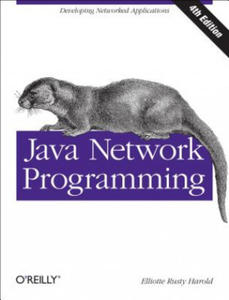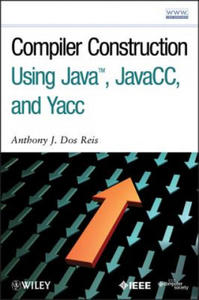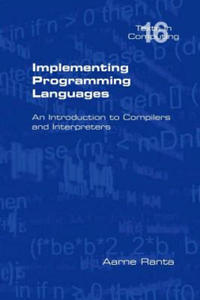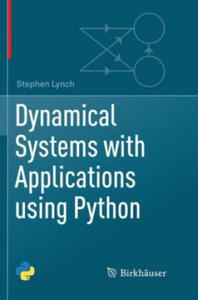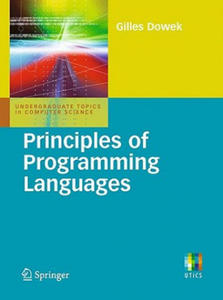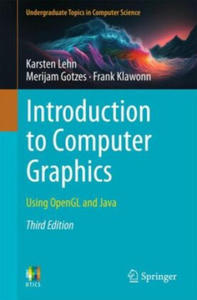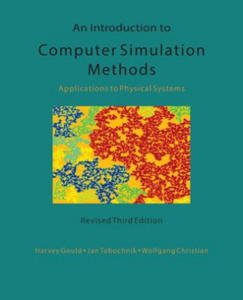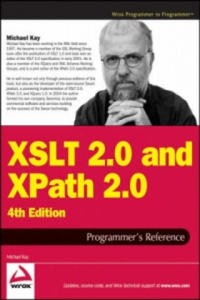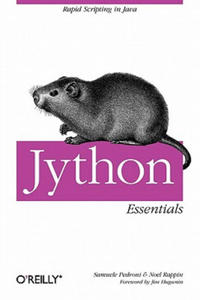gigant introduction to java programming using greenfoot axehddjasmeoejegojly
- znaleziono 23 produkty w 4 sklepach
Functional Programming for Java Developers O'Reilly Media
Książki / Literatura obcojęzyczna
Software development today is embracing functional programming (FP), whether it's for writing concurrent programs or for managing Big Data. Where does that leave Java developers? This concise book offers a pragmatic, approachable introduction to FP for Java developers or anyone who uses an object-oriented language. Dean Wampler, Java expert and author of Programming Scala (O'Reilly), shows you how to apply FP principles such as immutability, avoidance of side-effects, and higher-order functions to your Java code. Each chapter provides exercises to help you practice what you've learned. Once you grasp the benefits of functional programming, you'll discover that it improves all of the code you write. * Learn basic FP principles and apply them to object-oriented programming * Discover how FP is more concise and modular than OOP * Get useful FP lessons for your Java type design - such as avoiding nulls * Design data structures and algorithms using functional programming principles * Write concurrent programs using the Actor model and software transactional memory * Use functional libraries and frameworks for Java - and learn where to go next to deepen your functional programming skills
Sklep: Libristo.pl
Java Network Programming 4ed O'Reilly Media, Inc, USA
Książki / Literatura obcojęzyczna
This practical guide provides a complete introduction to developing network programs with Java. You'll learn how to use Java's network class library to quickly and easily accomplish common networking tasks such as writing multithreaded servers, encrypting communications, broadcasting to the local network, and posting data to server-side programs. Author Elliotte Rusty Harold provides complete working programs to illustrate the methods and classes he describes. This thoroughly revised fourth edition covers REST, SPDY, asynchronous I/O, and many other recent technologies. Explore protocols that underlie the Internet, such as TCP/IP and UDP/IP Learn how Java's core I/O API handles network input and output Discover how the InetAddress class helps Java programs interact with DNS Locate, identify, and download network resources with Java's URI and URL classes Dive deep into the HTTP protocol, including REST, HTTP headers, and cookies Write servers and network clients, using Java's low-level socket classes Manage many connections at the same time with the nonblocking I/O
Sklep: Libristo.pl
Compiler Construction Using Java, JavaCC and Yacc John Wiley & Sons Inc
Książki / Literatura obcojęzyczna
A student-friendly, course-friendly guide to compiler theory, applications, and programming technology§Compiler construction is a tricky subject, involving theory, the application of that theory, and programming technology. Virtually every day, advances in computer technology propel advances in compiler technology. Compiler Construction Using Java, JavaCC, and Yacc covers every topic essential to learning compilers from the ground up and is accompanied by a powerful and flexible software package for evaluating projects as well as several tutorials, well-defined projects, and test cases. While the coverage of JavaCC is entirely optional, this book provides the only comprehensive introduction to the topic currently available.§Far easier to read and understand than any other compiler guide, this book sets a new standard for learning this invaluable skill. It provides:§Strong coverage of formal languages, including context-sensitive and unrestricted languages as well as regular and context-free languages§A clear exposition of compiler design and implementation theory§Numerous well-defined projects, using source language with six levels of complexity§A complete teaching support software package that evaluates compiler projects for correctness, run time, and size of code, and runs on multiple platforms§Immediate feedback for students on their projects§Compiler Construction Using JavaTM, JavaCC, and Yacc provides substantial support for each project, many of which are incremental enhancements of previous projects. The goals at each new level are challenging but achievable and can be reached in several different ways, for example, by writing a compiler or interpreter by hand, with JavaCC, or with Yacc.
Sklep: Libristo.pl
Implementing Programming Languages. An Introduction to Compilers and Interpreters College Publications
Książki / Literatura obcojęzyczna
Implementing a programming language means bridging the gap from the programmer's high-level thinking to the machine's zeros and ones. If this is done in an efficient and reliable way, programmers can concentrate on the actual problems they have to solve, rather than on the details of machines. But understanding the whole chain from languages to machines is still an essential part of the training of any serious programmer. It will result in a more competent programmer, who will moreover be able to develop new languages. A new language is often the best way to solve a problem, and less difficult than it may sound.This book follows a theory-based practical approach, where theoretical models serve as blueprint for actual coding. The reader is guided to build compilers and interpreters in a well-understood and scalable way. The solutions are moreover portable to different implementation languages. Much of the actual codeis automatically generated from a grammar of the language, by using the BNF Converter tool. The rest can be written in Haskell or Java, for which thebook gives detailed guidance, but with some adaptation also in C, C++, C#, or OCaml, which are supported by the BNF Converter.The main focus of the book is on standard imperative and functional languages: a subset of C++ and a subset of Haskell are the source languages, and Java Virtual Machine is the main target. Simple Intel x86 native code compilation is shown to complete the chain from language to machine. The last chapter leaves the standard paths and explores the space of language design ranging fromminimal Turing-complete languages to human-computer interaction in natural language.
Sklep: Libristo.pl
Reactive Streams in Java APress
Książki / Literatura obcojęzyczna
Get an easy introduction to reactive streams in Java to handle concurrency, data streams, and the propagation of change in today's applications. This compact book includes in-depth introductions to RxJava, Akka Streams, and Reactor, and integrates the latest related features from Java 9 and 11, as well as reactive streams programming with the Android SDK.Reactive Streams in Java explains how to manage the exchange of stream data across an asynchronous boundary-passing elements on to another thread or thread-pool-while ensuring that the receiving side is not forced to buffer arbitrary amounts of data which can reduce application efficiency. After reading and using this book, you'll be proficient in programming reactive streams for Java in order to optimize application performance, and improve memory management and data exchanges. What You Will LearnDiscover reactive streams and how to use themWork with the latest features in Java 9 and Java 11Apply reactive streams using RxJavaProgram using Akka StreamsCarry out reactive streams programming in AndroidWho This Book Is ForExperienced Java programmers.
Sklep: Libristo.pl
Dynamic Programming Springer-Verlag Berlin and Heidelberg GmbH & Co....
Książki / Literatura obcojęzyczna
This book provides a practical introduction to computationally solving discrete optimization problems using dynamic programming. From the unusually numerous and varied examples presented, readers should more easily be able to formulate dynamic programming solutions to their own problems of interest. §We also provide and describe the design, implementation, and use of a software tool, named DP2PN2Solver, that has been used to numerically solve all of the problems presented earlier in the book. This computational tool can be used by students to solve academic problems if this book is used in coursework, and by practitioners to solve many real-world problems if the state space is not too large. §Finally, this book is also a research monograph that describes a novel application of Petri net theory. DP2PN2Solver takes user input in the form of the DP functional equation for a problem, automatically constructs a Petri net model, called a Bellman net, as an internal computer representation for the DP problem, and then generates from the Bellman net the numerical solution for the DP problem. This solution can be obtained using Java, a spreadsheet, a Petri net tool, and other systems.
Sklep: Libristo.pl
Dynamical Systems with Applications using Python Springer Nature Switzerland AG
Książki / Literatura obcojęzyczna
This textbook provides a broad introduction to continuous and discrete dynamical systems. With its hands-on approach, the text leads the reader from basic theory to recently published research material in nonlinear ordinary differential equations, nonlinear optics, multifractals, neural networks, and binary oscillator computing. Dynamical Systems with Applications Using Python takes advantage of Python's extensive visualization, simulation, and algorithmic tools to study those topics in nonlinear dynamical systems through numerical algorithms and generated diagrams. After a tutorial introduction to Python, the first part of the book deals with continuous systems using differential equations, including both ordinary and delay differential equations. The second part of the book deals with discrete dynamical systems and progresses to the study of both continuous and discrete systems in contexts like chaos control and synchronization, neural networks, and binary oscillator computing. These later sections are useful reference material for undergraduate student projects. The book is rounded off with example coursework to challenge students' programming abilities and Python-based exam questions. This book will appeal to advanced undergraduate and graduate students, applied mathematicians, engineers, and researchers in a range of disciplines, such as biology, chemistry, computing, economics, and physics. Since it provides a survey of dynamical systems, a familiarity with linear algebra, real and complex analysis, calculus, and ordinary differential equations is necessary, and knowledge of a programming language like C or Java is beneficial but not essential.
Sklep: Libristo.pl
Principles of Programming Languages Springer London Ltd
Książki / Literatura obcojęzyczna
The development of programming languages has radically modified our relation to language, complexity and machines. This book is an introduction to the principles around which these languages are organised imperative constructions, functional constructions, reference, dynamic data types, objects and more. Using Java as a main language, but systematically comparing it to other languages it enables the reader to understand the unifying concepts that lie beneath each particular language and provides the tools that allow the students to adapt to new programming languages.
Sklep: Libristo.pl
Introduction to Computer Graphics Springer, Berlin
Książki / Literatura obcojęzyczna
A basic understanding of the key techniques in computer graphics can open the door to this exciting field and its many applications, including for video games and for augmented and virtual reality.This easy-to-follow textbook and reference introduces the fundamental concepts of computer graphics, integrating both technical background and theory with practical examples and applications throughout. Thoroughly revised and updated, this new edition continues to present a user-friendly approach to creating images and animations, complementing the expanded coverage of topics with usage of example programs and exercises.Topics and features:Contains pedagogical tools, including easy-to-understand example programs and end-of-chapter exercisesPresents a practical guide to basic computer graphics programming using the Open Graphics Library (OpenGL) and the widely used Java programming languageIncludes new and expanded content on the OpenGL graphics pipelines, shader programming, drawing basic objects using the OpenGL, three-dimensional modelling, quaternions, rasterisation, antialiasing and moreSupplies complete Java project examples as supplementary materialThis reader-friendly textbook is an essential tool for second-year undergraduate students and above, providing clear and concise explanations of the basic concepts of computer graphics. It will enable readers to immediately implement these concepts using the OpenGL and Java (with only elementary knowledge of the programming language).Prof. Dr.-Ing. Karsten Lehn works at the Faculty of Information Technology at Fachhochschule Dortmund, University of Applied Sciences and Arts. Prof. Dr. Merijam Gotzes is teaching at Hamm-Lippstadt University of Applied Sciences. Prof. Dr. Frank Klawonn is head of the Data Analysis and Pattern Recognition Laboratory at the Ostfalia University of Applied Sciences and heads the Biostatistics Research Group at the Helmholtz Centre for Infection Research
Sklep: Libristo.pl
Introduction to Computer Graphics Springer Verlag
Medycyna > English Division
This book provides an introduction to the most important basic concepts of computer graphics. It couples the technical background and theory immediately with practical examples and applications. The reader can follow up the theory and then literally see the theory at work in numerous example programs. With only elementary knowledge of the programming language Java, the reader will be able to create his or her own images and animations immediately using Java 2D and Java 3D. A website for this book includes programs with source code, exercises with solutions and slides as teaching material.
Sklep: Ksiazki-medyczne.eu
Introduction to Computer Simulation Methods Createspace Independent Publishing Platform
Książki / Literatura obcojęzyczna
The revised Third Edition of An Introduction to Computer Simulation Methods uses Java to teach physical concepts using computer simulations. The text incorporates object-oriented programming techniques and encourages readers to develop good programming hab
Sklep: Libristo.pl
Spalona Żywcem Wyd. Kieszonkowe - Souad
Książki & Multimedia > Książki
Opis - Pierwsze na świecie świadectwo ofiary zbrodni honorowej. Miała siedemnaście lat i zakochała się: zhańbiła rodzinę. Więc rodzina wydała na nią wyrok śmierci... Pokochała go pierwszą miłością. Myślała, że się z nią ożeni. Ale ukochany zniknął, a ona odkryła, że jest w ciąży. A w jej świecie to najcięższa zbrodnia... W zapomnianej przez Boga wiosce w Cisjordanii kobiety są warte mniej niż zwierzęta domowe. Tu mężczyzna jest panem życia i śmierci żony, córki, siostry. Brat może bezkarnie zabić siostrę, matka - córkę, kolejną bezużyteczną dziewczynkę, jaka się urodzi. Tu kobiecie odbiera się godność, a nawet życie zgodnie z odwiecznym obyczajem i uświęconą tradycją. A śmierć jest karą dla dziewczyny, która zhańbi rodzinę. Tak jak Souad. Wyrok wydaje jej ojciec. Szwagier dokonuje egzekucji. Oblewa Souad benzyną i podpala... SOUAD przeżyła - cudem, ale rodzina usiłowała zabić ją nawet w szpitalu. Na zawsze jednak pozostanie straszliwie okaleczona - na ciele i duszy. I wciąż musi się ukrywać; dopóki żyje, jej rodzinę okrywa hańba. Spalona żywcem, opublikowana pod pseudonimem szokująca opowieść o piekle, jakim było jej dzieciństwo i młodość, stała się międzynarodowym bestsellerem. Wydana w 37 w krajach książka przerywa tabu milczenia wobec istniejącej nadal w krajach muzułmańskich barbarzyńskiej tradycji. Nieludzkiego obyczaju, prawa mężczyzn, na mocy którego co najmniej pięć tysięcy kobiet pada co roku ofiarą zbrodni honorowej. Nazwa - Spalona Żywcem Wyd. Kieszonkowe Autor - Souad Oprawa - Miękka Wydawca - Amber Kod ISBN - 9788324159406 Kod EAN - 9788324159406 Wydanie - 1 Rok wydania - 2016 Tłumacz - 31182,maria rostworowska; Format - 110 x 175 x 14 Ilość stron - 224 Podatek VAT - 5% Premiera - 2016-06-23
Sklep: InBook.pl
XSLT 2.0 and XPath 2.0 Programmer's Reference 4e John Wiley & Sons Inc
Książki / Literatura obcojęzyczna
This book is primarily a practical reference book for professional XSLT developers. It assumes no previous knowledge of the language, and many developers have used it as their first introduction to XSLT; however, it is not structured as a tutorial, and there are other books on XSLT that provide a gentler approach for beginners. The book does assume a basic knowledge of XML, HTML, and the architecture of the Web, and it is written for experienced programmers. There's no assumption that you know any particular language such as Java or Visual Basic, just that you recognize the concepts that all programming languages have in common. The book is suitable both for XSLT 1.0 users upgrading to XSLT 2.0, and for newcomers to XSLT. The book is also equally suitable whether you work in the Java or .NET world. As befits a reference book, a key aim is that the coverage should be comprehensive and authoritative. It is designed to give you all the details, not just an overview of the 20 percent of the language that most people use 80 percent of the time.It's designed so that you will keep coming back to the book whenever you encounter new and challenging programming tasks, not as a book that you skim quickly and then leave on the shelf. If you like detail, you will enjoy this book; if not, you probably won't. But as well as giving the detail, this book aims to explain the concepts, in some depth. It's therefore a book for people who not only want to use the language but who also want to understand it at a deep level. The book aims to tell you everything you need to know about the XSLT 2.0 language. It gives equal weight to the things that are new in XSLT 2.0 and the things that were already present in version 1.0. The book is about the language, not about specific products. However, there are appendices about Saxon (the author's own implementation of XSLT 2.0), about the Altova XSLT 2.0 implementation, and about the Java and Microsoft APIs for controlling XSLT transformations, which will no doubt be upgraded to handle XSLT 2.0 as well as 1.0. A third XSLT 2.0 processor, Gestalt, was released shortly before the book went to press, too late to describe it in any detail. But the experience of XSLT 1.0 is that there has been a very high level of interoperability between different XSLT processors, and if you can use one of them, then you can use them all.In the previous edition we split XSLT 2.0 and XPath 2.0 into separate volumes. The idea was that some readers might be interested in XPath alone. However, many bought the XSLT 2.0 book without its XPath companion and were left confused as a result; so this time, the material is back together. The XPath reference information is in self-contained chapters, so it should still be accessible when you use XPath in contexts other than XSLT. The book does not cover XSL Formatting Objects, a big subject in its own right. Nor does it cover XML Schemas in any detail. If you want to use these important technologies in conjunction with XSLT, there are other books that do them justice. This book contains twenty chapters and eight appendixes (the last of which is a glossary) organized into four parts. The following section outlines what you can find in each part, chapter, and appendix. Part I: Foundations: The first part of the book covers essential concepts. You should read these before you start coding.If you ignore this advice, as most people do, then you read them when you get to that trough of despair when you find it impossible to make the language do anything but the most trivial tasks. XSLT is different from other languages, and to make it work for you, you need to understand how it was designed to be used. Chapter 1: XSLT in Context: This chapter explains how XSLT fits into the big picture: how the language came into being and how it sits alongside other technologies. It also has a few simple coding examples to keep you alert. Chapter 2: The XSLT Processing Model: This is about the architecture of an XSLT processor: the inputs, the outputs, and the data model. Understanding the data model is perhaps the most important thing that distinguishes an XSLT expert from an amateur; it may seem like information that you can't use immediately, but it's knowledge that will stop you making a lot of stupid mistakes. Chapter 3: Stylesheet Structure: XSLT development is about writing stylesheets, and this chapter takes a bird's eye view of what stylesheets look like.It explains the key concepts of rule-based programming using templates, and explains how to undertake programming-in-the-large by structuring your application using modules and pipelines. Chapter 4: Stylesheets and Schemas: A key innovation in XSLT 2.0 is that stylesheets can take advantage of knowledge about the structure of your input and output documents, provided in the form of an XML Schema. This chapter provides a quick overview of XML Schema to describe its impact on XSLT development. Not everyone uses schemas, and you can skip this chapter if you fall into that category. Chapter 5: The Type System: XPath 2.0 and XSLT 2.0 offer strong typing as an alternative to the weak typing approach of the 1.0 languages. This means that you can declare the types of your variables, functions, and parameters, and use this information to get early warning of programming errors. This chapter explains the data types available and the mechanisms for creating user-defined types. Part II: XSLT and XPath Reference: This section of the book contains reference material, organized in the hope that you can easily find what you need when you need it.It's not designed for sequential reading, though you might well want to leaf through the pages to discover what's there. Chapter 6: XSLT Elements: This monster chapter lists all the XSLT elements you can use in a stylesheet, in alphabetical order, giving detailed rules for the syntax and semantics of each element, advice on usage, and examples. This is probably the part of the book you will use most frequently as you become an expert XSLT user. It's a "no stone unturned" approach, based on the belief that as a professional developer you need to know what happens when the going gets tough, not just when the wind is in your direction. Chapter 7: XPath Fundamentals: This chapter explains the basics of XPath: the low-level constructs such as literals, variables, and function calls. It also explains the context rules, which describe how the evaluation of XPath expressions depends on the XSLT processing context in which they appear. Chapter 8: XPath: Operators on Items: XPath offers the usual range of operators for performing arithmetic, boolean comparison, and the like.However, these don't always behave exactly as you would expect, so it's worth reading this chapter to see what's available and how it differs from the last language that you used. Chapter 9: XPath: Path Expressions: Path expressions are what make XPath special; they enable you to navigate around the structure of an XML document. This chapter explains the syntax of path expressions, the 13 axes that you can use to locate the nodes that you need, and associated operators such as union, intersection, and difference. Chapter 10: XPath: Sequence Expressions: Unlike XPath 1.0, in version 2.0 all values are sequences (singletons are just a special case). Some of the most important operators in XPath 2.0 are those that manipulate sequences, notably the "for" expression, which translates one sequence into another by applying a mapping. Chapter 11: XPath: Type Expressions: The type system was explained in Chapter 5; this chapter explains the operations that you can use to take advantage of types. This includes the "cast" operation which is used to convert values from one type to another.A big part of this chapter is devoted to the detailed rules for how these conversions are done.Chapter 12: XSLT Patterns: This chapter returns from XPath to a subject that's specific to XSLT. Patterns are used to define template rules, the essence of XSLT's rule-based programming approach. The reason for explaining them now is that the syntax and semantics of patterns depends strongly on the corresponding rules for XPath expressions. Chapter 13: The Function Library: XPath 2.0 includes a library of functions that can be called from any XPath expression; XSLT 2.0 extends this with some additional functions that are available only when XPath is used within XSLT. The library has grown immensely since XPath 1.0. This chapter provides a single alphabetical reference for all these functions. Chapter 14: Regular Expressions: Processing of text is an area where XSLT 2.0 and XPath 2.0 are much more powerful than version 1.0, and this is largely through the use of constructs that exploit regular expressions. If you're familiar with regexes from languages such as Perl, this chapter tells you how XPath regular expressions differ. If you're new to the subject, it explains it from first principles.Chapter 15: Serialization: Serialization in XSLT means the ability to generate a textual XML document from the tree structure that's manipulated by a stylesheet. This isn't part of XSLT processing proper, so (following W3C's lead) it's separated it into its own chapter. You can control serialization from the stylesheet using an declaration, but many products also allow you to control it directly via an API. Part III: Exploitation: The final section of the book is advice and guidance on how to take advantage of XSLT to write real applications. It's intended to make you not just a competent XSLT coder, but a competent designer too. The best way of learning is by studying the work of others, so the emphasis here is on practical case studies. Chapter 16: Extensibility: This chapter describes the "hooks" provided in the XSLT specification to allow vendors and users to plug in extra functionality. The way this works will vary from one implementation to another, so we can't cover all possibilities, but one important aspect that the chapter does cover is how to use such extensions and still keep your code portable.Chapter 17: Stylesheet Design Patterns: This chapter explores a number of design and coding patterns for XSLT programming, starting with the simplest "fill-in-the-blanks" stylesheet, and extending to the full use of recursive programming in the functional programming style, which is needed to tackle problems of any computational complexity. This provides an opportunity to explain the thinking behind functional programming and the change in mindset needed to take full advantage of this style of development. Chapter 18: Case Study: XMLSpec: XSLT is often used for rendering documents, so where better to look for a case study than the stylesheets used by the W3C to render the XML and XSLT specifications, and others in the same family, for display on the web? The resulting stylesheets are typical of those you will find in any publishing organization that uses XML to develop a series of documents with a compatible look-and-feel. Chapter 19: Case Study: A Family Tree: Displaying a family tree is another typical XSLT application.This example with semi-structured data-a mixture of fairly complex data and narrative text-that can be presented in many different ways for different audiences. It also shows how to tackle another typical XSLT problem, conversion of the data into XML from a legacy text-based format. As it happens, this uses nearly all the important new XSLT 2.0 features in one short stylesheet. But another aim of this chapter is to show a collection of stylesheets doing different jobs as part of a complete application. Chapter 20: Case Study: Knight's Tour: Finding a route around a chessboard where a knight visits every square without ever retracing its steps might sound a fairly esoteric application for XSLT, but it's a good way of showing how even the most complex of algorithms are within the capabilities of the language. You may not need to tackle this particular problem, but if you want to construct an SVG diagram showing progress against your project plan, then the problems won't be that dissimilar. Part IV: Appendices: A ppendix A: XPath 2.0 Syntax Summary: Collects the XPath grammar rules and operator precedences into one place for ease of reference.Appendix B: Error Codes: A list of all the error codes defined in the XSLT and XPath language specifications, with brief explanations to help you understand what's gone wrong. Appendix C: Backward Compatibility: The list of things you need to look out for when converting applications from XSLT 1.0. Appendix D: Microsoft XSLT Processors: Although the two Microsoft XSLT processors don't yet support XSLT 2.0, we thought many readers would find it useful to have a quick summary here of the main objects and methods used in their APIs. Appendix E: JAXP: the Java API for XML Processing: JAXP is an interface rather than a product. Again, it doesn't have explicit support yet for XSLT 2.0, but Java programmers will often be using it in XSLT 2.0 projects, so the book includes an overview of the classes and methods available. Appendix F: Saxon: At the time of writing Saxon (developed by the author of this book) provides the most comprehensive implementation of XSLT 2.0 and XPath 2.0, so its interfaces and extensions are covered in some detail. Appendix G: Altova: Altova, the developers of XML Spy, have an XSLT 2.0 processor that can be used either as part of the development environment or as a freestanding component.This appendix gives details of its interfaces. Appendix H: Glossary Note: CD-ROM/DVD and other supplementary materials are not included as part of eBook file.
Sklep: Libristo.pl
Beginning Jakarta EE Web Development APress
Książki / Literatura obcojęzyczna
Start building Java-based web applications now, even if you're a complete newcomer to Java. Comprehensive and example-driven, this book is all you need to develop dynamic Java-based web applications using JSP, connect to databases with JSF, and put them into action using the popular open source Java web server, Apache Tomcat. Beginning Jakarta EE Web Development is a comprehensive introduction to building Java-based web applications using JavaServer Pages (JSP) using Jakarta Server Pages, JavaServer Faces (JSF) using Jakarta Server Faces, and the Apache Tomcat web application server. Other APIs including JSON and the XML-based job specification language (JSL) are covered along the way. Key concepts are made easy to grasp with numerous working examples and a walk-through of the development of a complete ecommerce project. This book is written for professionals by practicing Java web application professionals and experts. What You Will Learn Build Java-based web applications using JSP and JSF with Eclipse Jakarta EE Use the new Jakarta Server Faces APIs to create JSF applications Work with the new Jakarta Server Pages APIs to create JSPs Integrate and implement JSF and JSP together Build an online ecommerce web application along the way Who This Book Is For Programmers new to programming in Java and programming in general.
Sklep: Libristo.pl
Jython Essentials O'Reilly Media
Książki / Literatura obcojęzyczna
Jython is an implementation of the Python programming language written in 100% pure Java, so it runs under any compliant Java Virtual Machine. The secret to Jython's popularity lies in the combination of Java's libraries and tools with Python's rapid development capabilities. With Jython, you can write Python programs that integrate seamlessly with any Java code. And like Python, Jython can be used interactively, so you can get immediate results as you are programming. Jython Essentials provides a solid introduction to the Python language, offering a brief but thorough tour of the Python concepts you'll need to understand to use Jython effectively. The book makes frequent comparisons between Python and Java, with special emphasis on the different object-oriented semantics of the two languages, so Java programmers can quickly get up to speed with Jython. Jython Essentials also covers the various ways in which Jython and Java can interact. For example, Jython code can create instances of pre-existing Java classes and call methods in those instances.You can write Jython classes that are direct subclasses of existing Java classes and use introspection to discern the capabilities of JavaBeans components. This book provides examples of using Jython with existing Java libraries, including the Swing GUI toolkit, the JDBC database API, the Servlet API, and various XML tools. And finally, the book shows how Jython can be used as a scripting language within a Java program. With Jython Essentials, you have everything you need to start creating applications that mix the best of Python's interactivity and Java's robust libraries.
Sklep: Libristo.pl
szukaj w Kangoo gigant introduction to java programming using greenfoot axehddjasmeoejegojly
Sklepy zlokalizowane w miastach: Warszawa, Kraków, Łódź, Wrocław, Poznań, Gdańsk, Szczecin, Bydgoszcz, Lublin, Katowice
Szukaj w sklepach lub całym serwisie
1. Sklepy z gigant pl introduction to java programming using greenfoot axehddjasmeoejegojly
2. Szukaj na wszystkich stronach serwisu
t1=0.034, t2=0, t3=0, t4=0.014, t=0.034


